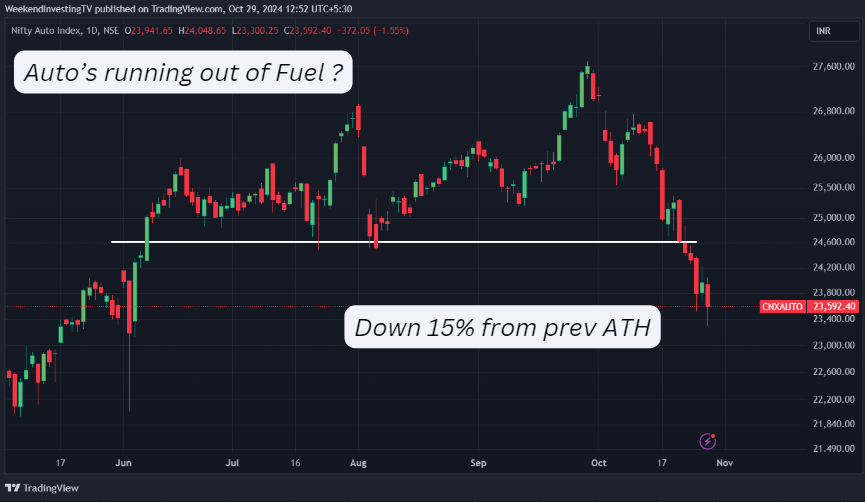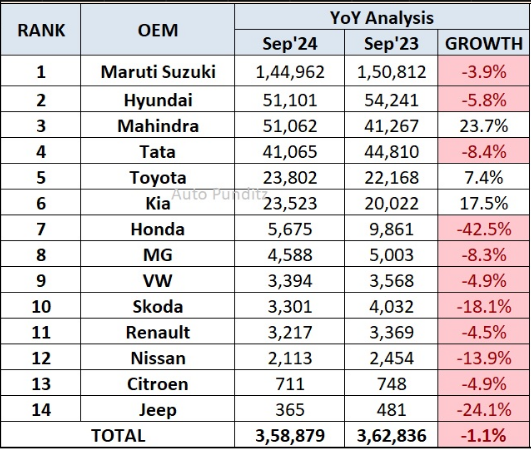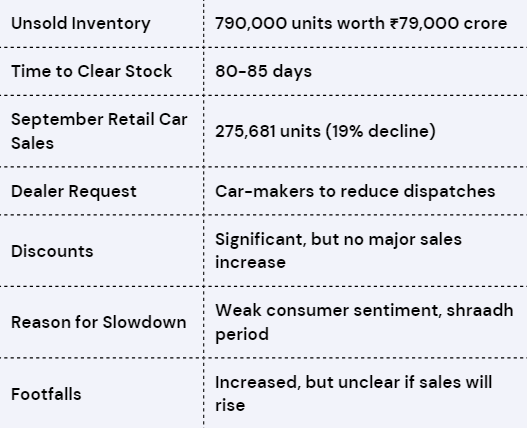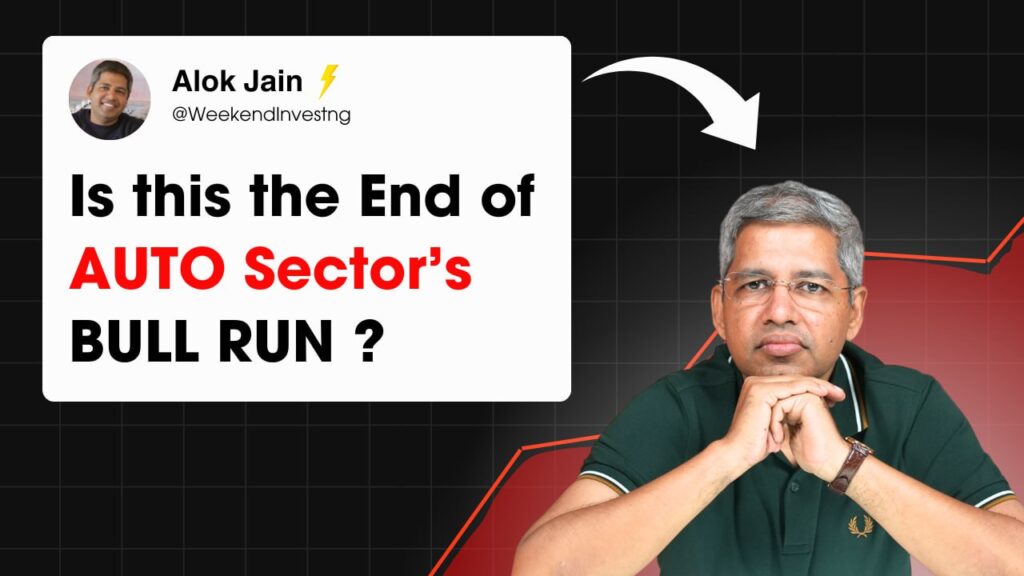
It was a volatile day in the markets, with fluctuations leading to a close that ultimately ended up. While we didn’t fall any further, the auto sector faced significant declines. Is this the end of the auto sector bull run? Have auto sector stocks run out of fuel? We will discuss this in the second half of the video.
Where is the market headed?
Market Overview
The market has now taken support at the bottom of the range, as we’ve been mentioning over the past couple of days. Although it failed to make a closing above the two-day high we normally look for, it seems to be in a consolidation zone. The best-case scenario could be that we start moving up and potentially hit some resistance around 25,000 with the moving average. The worst-case scenario could involve forming a head and shoulders pattern, where we experience a brief rise before dropping significantly lower. If this pattern plays out, given that the head here is more than 2,500 points, we could see further declines.
However, I may be biased, as I don’t feel the market is weak enough to go down that far. Strategies will take their positions as we go along.
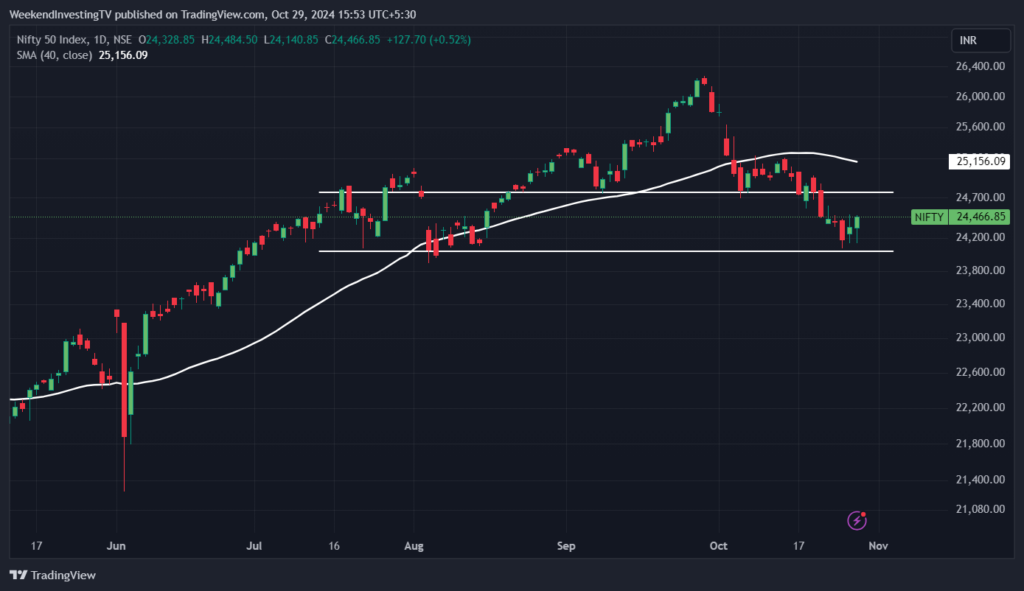
Nifty Next 50
The Nifty Junior remains an inside bar, meaning the entire range of the day has stayed within the previous larger range day. The last two sessions have been inside bars, which are not decisive. This could be just a brief relief, but as long as the bottom is secured, the risk appears to be lessened.
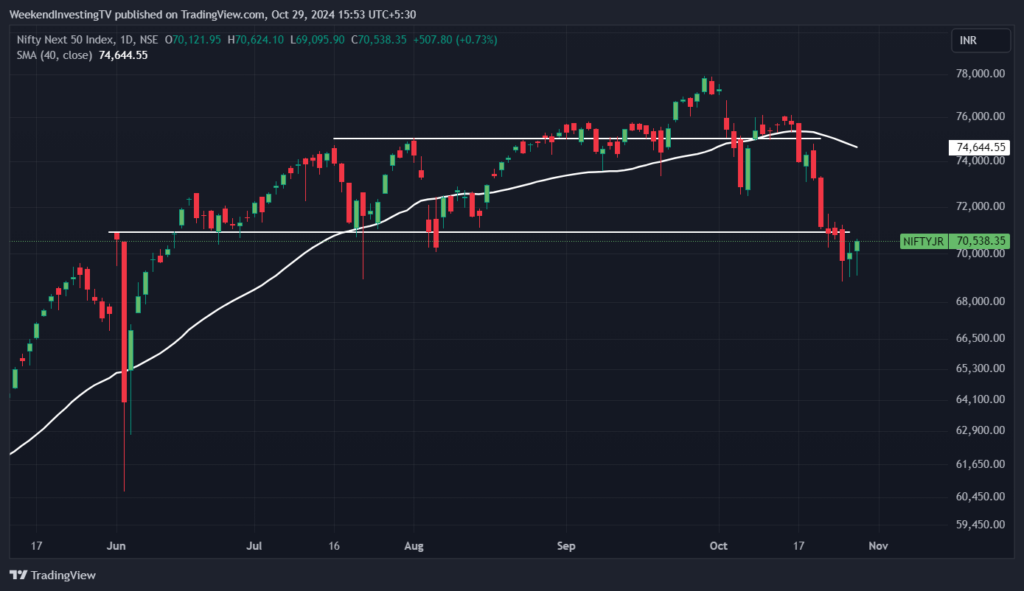
Nifty Mid and Small Cap
Mid-caps also gained 0.8%, remaining within the larger bar. Once we cross the top of the long bar from Friday, that will signal a possible end to the downside for at least the short term. Small caps gained 0.74% as well. All these charts are showing gains within this longer bar but have yet to break out.
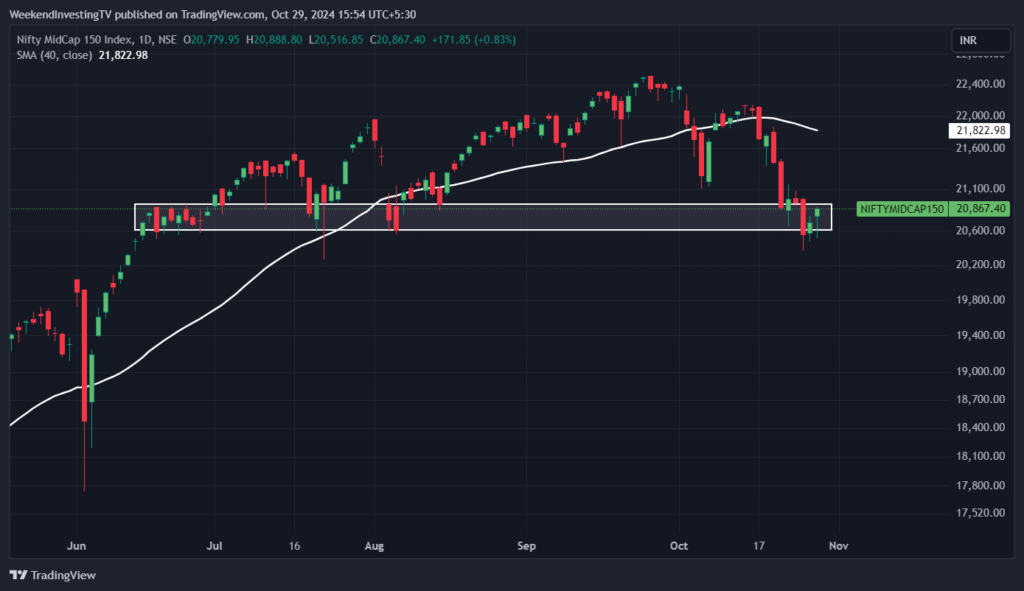
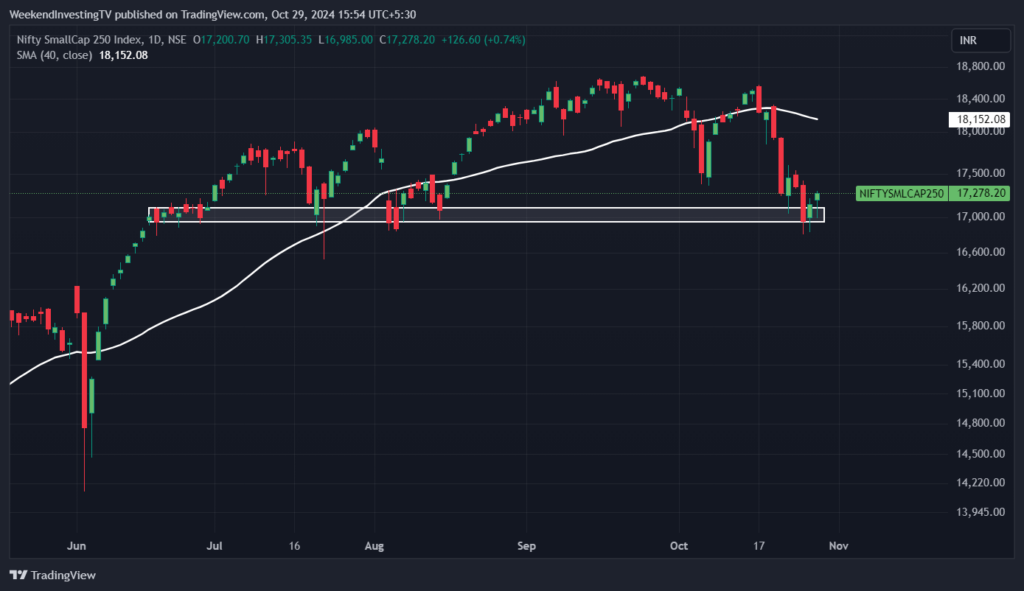
Nifty Bank Overview
Bank Nifty is really showing strength; in three days, we’ve moved from 50,400 to 52,320, which is very reassuring. Banking has made a comeback, up 2%, and banks usually lead trends, whether on the downside or upside. This possibly indicates that the current downward move is over, and banks may help pull the rest of the market upward.
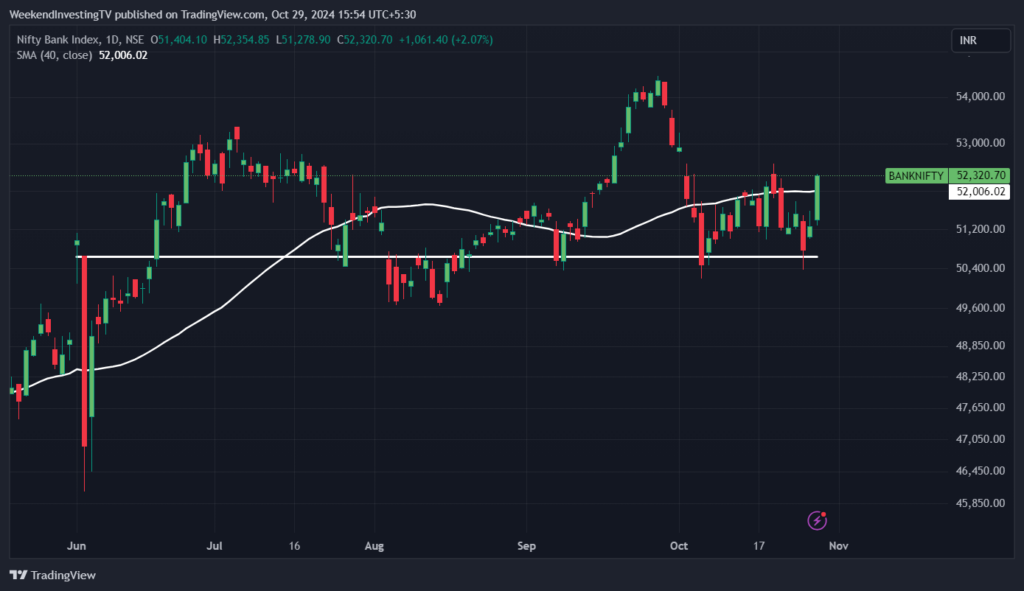
Advanced Declined Ratio Trends
Momentum in advance-decline trends shows 330 advances to 268 declines, which is a good ratio. However, FIIs continued to sell, amounting to 3,200 crores, while DIIs bought 1,400 crores in the previous session.

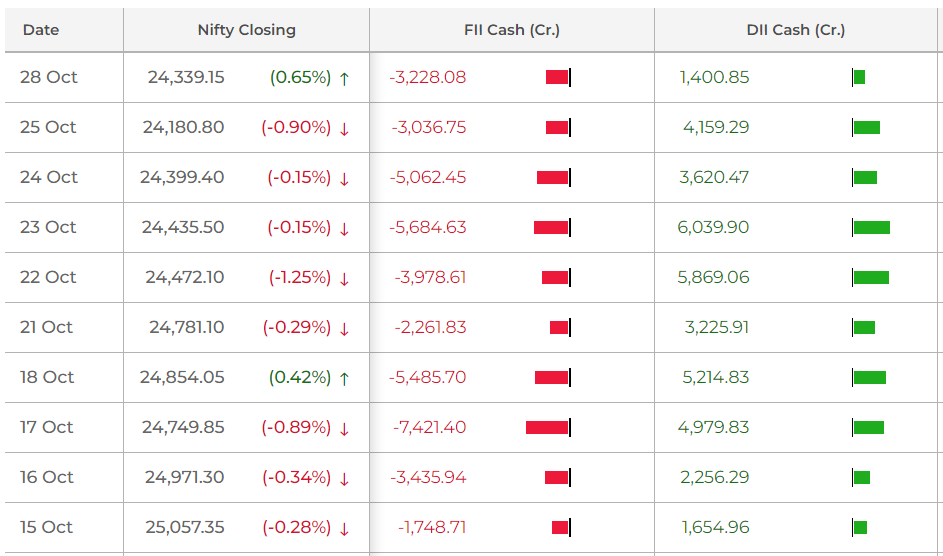
Nifty Heatmap
In the Nifty 50 segment, State Bank of India was up 5%. Whenever State Bank of India makes a large move, I see it as a decisive indicator for the Indian economy. If State Bank of India is doing well, it could signal that the markets will follow suit. Currently, State Bank of India looks very sharp.
ICICI Bank is providing good support from the private sector at plus 3%, and HDFC Bank also rose 1% today. Axis Bank and Kotak Bank are performing well too, indicating that the entire banking and finance space is moving up. Good moves were also observed in stocks like Bharat Electronics, NTPC, Aisha Motors, and Adani Enterprise, which reported strong results. On the downside, Hindustan Lever declined, and the auto space faced significant setbacks, with Tata Motors and Maruti both down 4%. Bajaj Auto and Mahindra also fell, while Aisha Motors stood out as the only performer in that space.
In the Nifty Next 50, there was mostly green, with PFC, REC, Bank of Baroda, and Kendra Bank performing well.
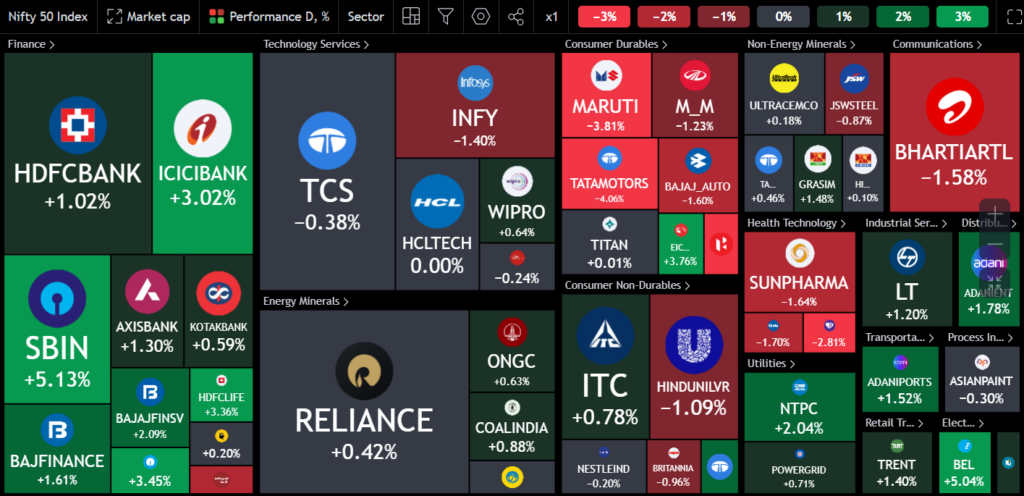
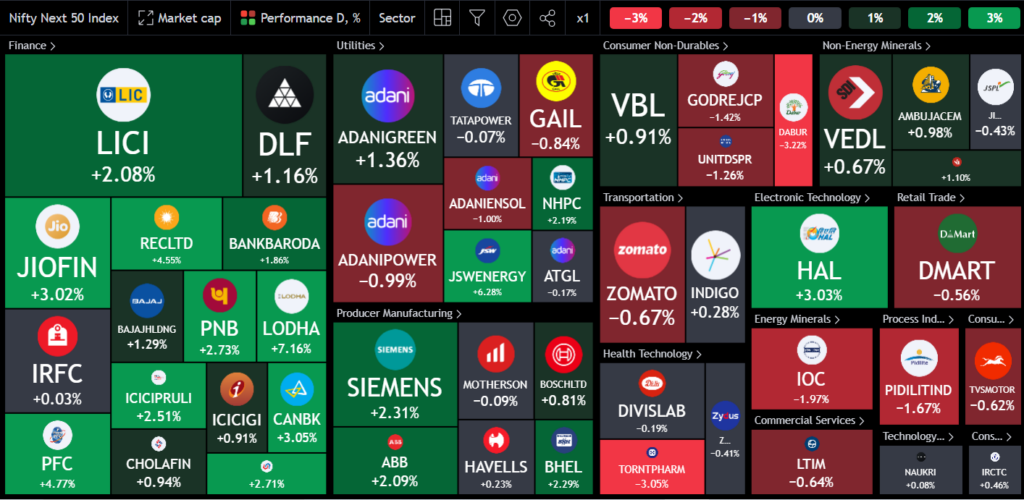
Sectoral Overview
The capital goods sector is also looking good, with Siemens and ABB up 2.5% and 2%, respectively. GSW Energy raced up 6%, LIC increased by 2%, and DLF was up another 1%. There were some declines in Torrent Pharma, PIDILite, IOC, Dabur, and a few others. Overall, it was a mixed day, but I wouldn’t complain; banks have made a comeback.
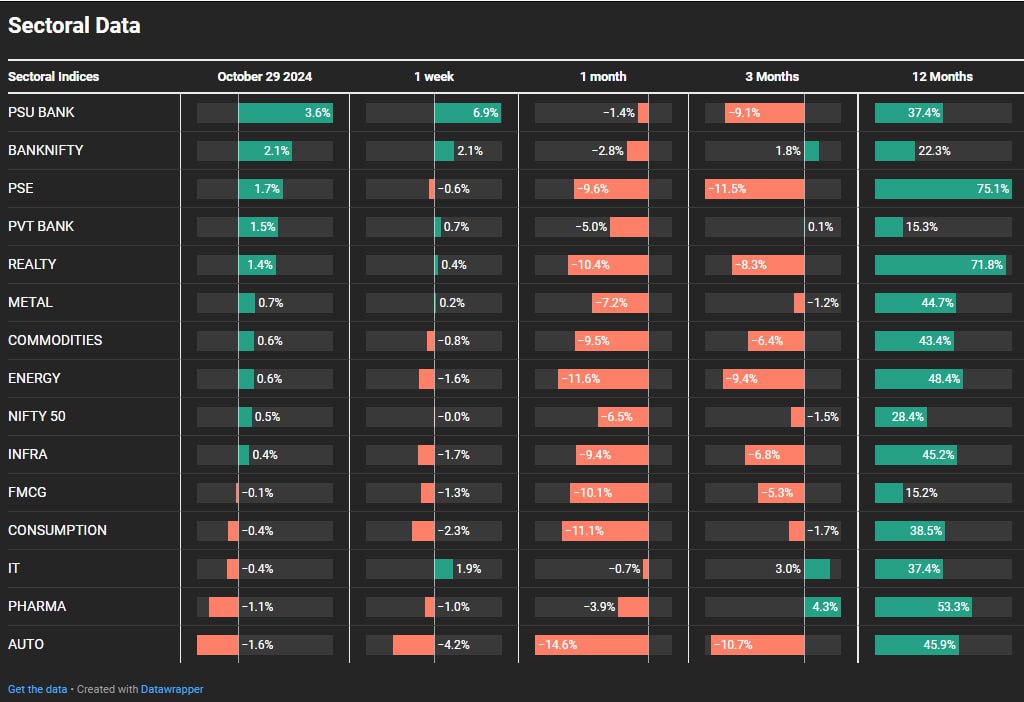
Sectors of the Day
Nifty PSU Bank Index
The previous breakdown in the PSU banking index chart appears to have been false, with a sharp recovery over two sessions for many banks.
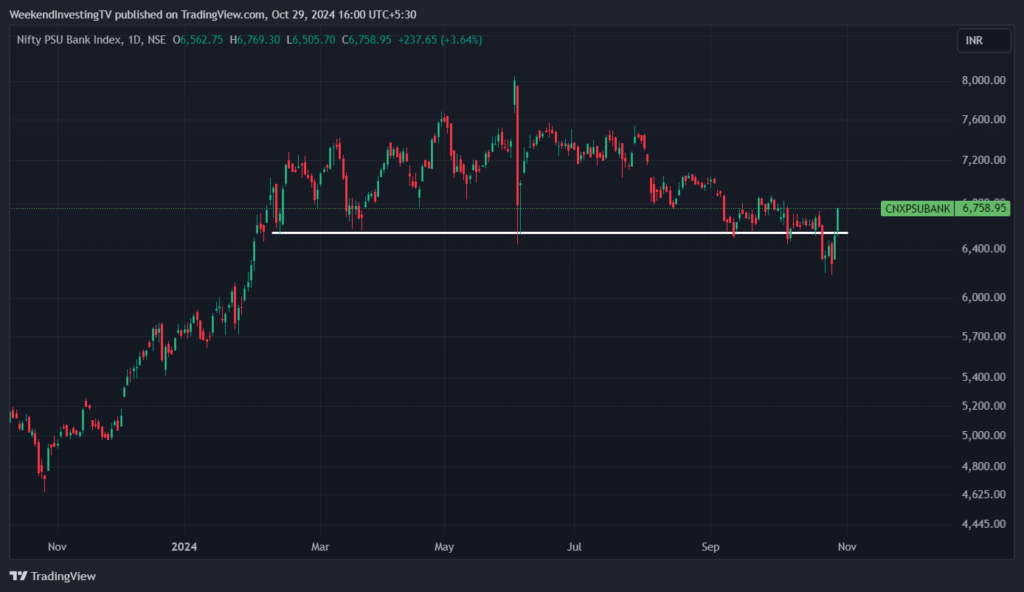
Stock of the Day
Syrma SGS Tech
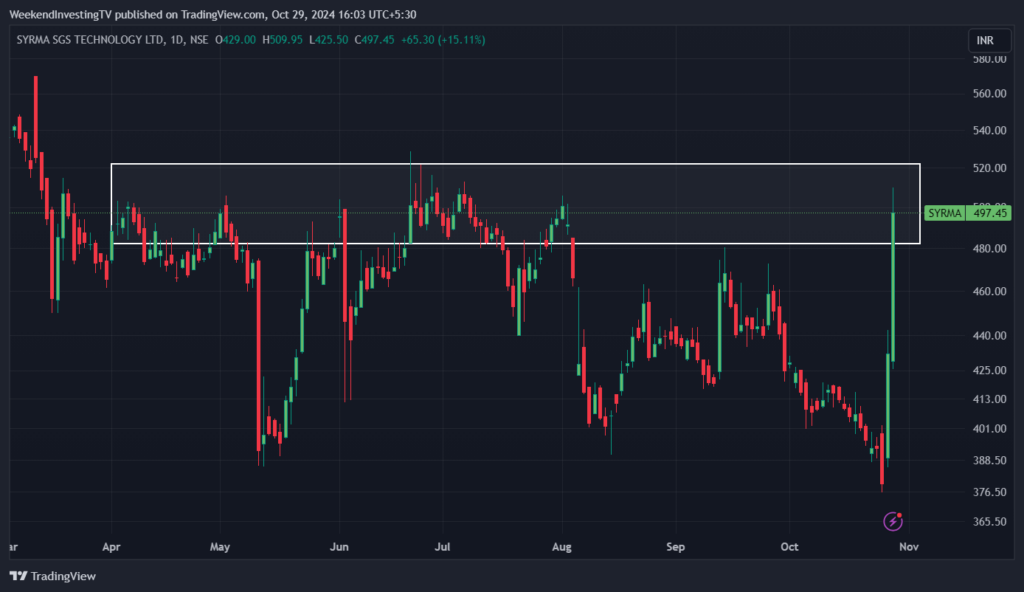
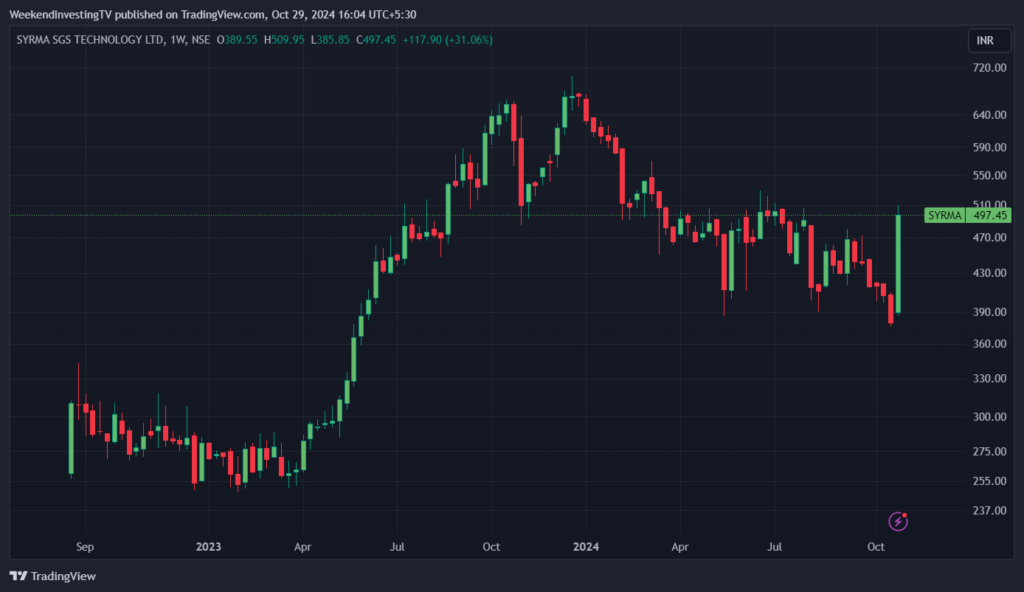
Story of the Day
Is it the end of the auto sector bull run? Has the auto sector run out of fuel? We’ve seen numerous headlines regarding weak demand and inflated valuations affecting the auto sector. Maruti Suzuki recently reported numbers that fell below expectations, indicating declining profits and an inventory pileup, with some estimates suggesting around 80,000 crores in unsold inventory in the auto space.
The Hyundai Motors IPO also had a tepid debut, dropping 7% after its record IPO. Even on a day when other sectors were trying to rally, autos were moving downward, now sitting 15% below their previous all-time high. If we are to see a rebound like the PSU banking sector, we need to see the Nifty Auto index above 24,600 for renewed confidence; otherwise, the downward trajectory seems pronounced.
Examining individual charts reveals that Tata Motors is already down 30% from its peak. Historically, Tata Motors has experienced cyclicality every decade, having plummeted from nearly 100 to 10 rupees, and then from 200 to 30, and again from 600 to 70. Currently, it stands around 1,200 rupees, but it’s uncertain where it will head next. These cyclical patterns arise because stocks can become overvalued or overowned, leading to natural corrections.
A lot of fear has crept into Tata Motors. While you might think the company is on the verge of exciting new developments, the stock price reflects underlying performance. The key question should be: why did you buy Tata Motors? If that thesis remains valid, then there’s no need to worry about a 30% or 50% drop. However, if your investment was based solely on price movement, you might be close to a stop-loss situation.
Concerns regarding high stock valuations, sluggish vehicle demand, and inventory levels are becoming prominent. Recent month-on-month figures show a lack of continuous growth across different manufacturers, with an overall decline of 1% year-over-year. Anecdotal evidence from car dealers indicates attractive discounts are being offered, which might suggest it’s a good time to buy.
With unsold inventory at 79,000 crores, poor September figures, and weak consumer sentiment, the economic environment feels sluggish. Meanwhile, the RBI governor indicates it’s too early to cut interest rates. This creates a disconnect that needs resolution—either through government intervention to encourage lower rates or perhaps some stimulus measures.
Historically, the auto sector is very cyclical. Over the past 20 years, there have been many cycles. From 2004 to 2007, the auto index gained 170%, then lost 60% over the next two and a half years. This pattern continued with a 1,300% gain followed by another 63% loss. In the following four and a half years, we saw a gain of 544%. Could we be looking at another 60% drawdown? It’s possible, so nothing should be taken for granted.
Following price movements is crucial—if the price indicates to stay in, do so; if it suggests to exit, get out. No sector can perform well indefinitely, and there will be times when sectors become overvalued and require cooling off. Currently, the Tata Motors chart and the overall auto index do not look appealing, but should it cross the 1.1 mark on the ratio chart of CNX Auto and Nifty, there may be potential for a comeback.
It’s important to be invested in sectors that are performing well, and once a sector begins to underperform, it’s wise to exit. This is the principle that many momentum strategies follow to ensure your portfolio remains sound and does not erode your confidence.
